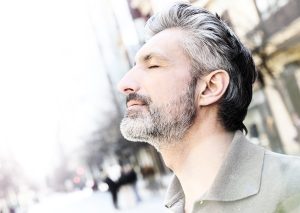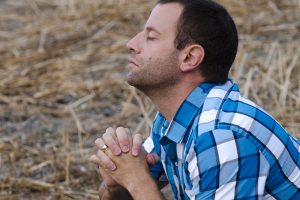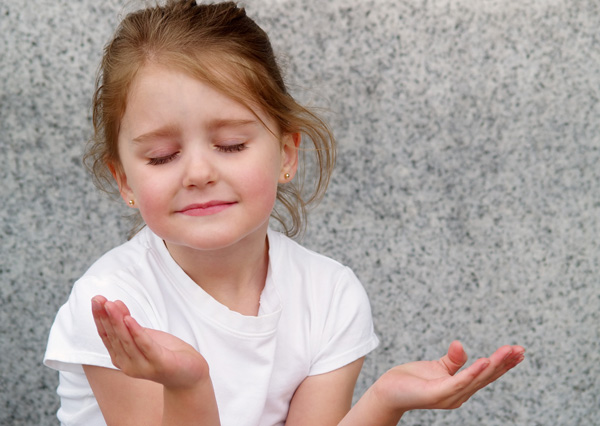The Power of Pausing, Acceptance, and the Breath
These days, we are all so active and fast-paced. It’s a hectic, modern world. Our children are “glued” to their video games and tweeting. They have a lot of homework and a lot of tasks to accomplish. Adults move endlessly from task to task, attempting to get more, or at least enough, accomplished in a day.
There are three fundamental energies we humans rely on, and boy, we need all three of these energies to really thrive in this world. But I have to say, the most neglected of these three energies in our particular society is the one known as “Receptive Energy.” Here is a brief definition of each:
- Active or Yang Energy flows outward into assertive and decisive action that is unrestricted and expansive. This energy is over-valued in achievement-oriented, success-oriented cultures. When contracted, this energy can get expressed externally as unrestrained, not unrestricted action and aggression.
- Receptive or Yin Energy flows inwardly as openness and receptivity and outwardly as flexibility and adaptability. It can also show up as stillness, even readiness, for action. When contracted, this aspect can lead to inertia and withdrawal.
- Balancing or Yin-Yang Energy represents a reconciling energy, harmonizing both active and receptive forces. It manifests as a continuous adjustment that we make to the ever-changing circumstances wherein reaction occurs if either receptive or active energy seems to dominate. When contracted, this energy collapses into a narrow and amplified rigidity.
Both Balancing and Active Energies depend upon Receptive Energy. Furthermore, Receptive Energy also provides the time and space for the Balancing Energy to fully operate. Receptive Energy function reminds me of a teeter-totter that we as children played on, where there was just no fun if we couldn’t create movement and flow. Thus, Receptive Energy allows us to thrive efficiently and effectively.
 To me, these three vital life energies, when in flowing balance and appropriate for any situation, allow us to flourish. Thus, Receptive Energy flows inward as openness and receptivity and outwardly as flexibility of action. It too can show up as stillness, which can be a readiness for action. It is effortless in the sense that you cannot demand yourself to be present. It comes with “may I be receptive and openhearted.” We can feel and sense the other, the world, and ourselves. It cannot be forced. Others experience receptive energy in us as openness, empathy, and understanding.
To me, these three vital life energies, when in flowing balance and appropriate for any situation, allow us to flourish. Thus, Receptive Energy flows inward as openness and receptivity and outwardly as flexibility of action. It too can show up as stillness, which can be a readiness for action. It is effortless in the sense that you cannot demand yourself to be present. It comes with “may I be receptive and openhearted.” We can feel and sense the other, the world, and ourselves. It cannot be forced. Others experience receptive energy in us as openness, empathy, and understanding.
Receptivity is vital to both awareness and acceptance. Being aware means developing the capacity of self-observation, groundedness, and the capacity to be present. It is the crucial first step for all of us. If we aren’t aware of our Enneagram type-related, cognitive-emotional-behavioral structures and habits, and our personal reactivity (upset, anger, defensiveness), it is not possible for us to really make more conscious and thoughtful choices about our behavior. Awareness requires an ongoing practice to increase receptivity and grounded presence so that our inner observation can “drop in” and witness the basis of our reactivity and literally witness our habitual type-based patterns.
 Intertwined with awareness is the opening of our hearts in kindness, to others and our selves in order for an acceptance of whatever arises in life and in the moment to occur. This requires adopting a kind and caring attitude. We have all had times where we manifested truly open-hearted kindness and care. And at times, we have experienced this from others. Positive psychology with its focus on joy, gratitude, and appreciation help create this vision. As a result, we experience more satisfaction, engagement, meaning in life, and hope. Acceptance includes befriending our reactivity and defensiveness and working with judgments of self and others and with the associated feelings and sensations. Am I angry, jealous, sad, for instance? Acceptance relies on being honest with ourselves. It’s hard to be honest with others if we’re not first honest with ourselves. The stance of acceptance is vital, for without acceptance, it is impossible to stay in the presence of what is.
Intertwined with awareness is the opening of our hearts in kindness, to others and our selves in order for an acceptance of whatever arises in life and in the moment to occur. This requires adopting a kind and caring attitude. We have all had times where we manifested truly open-hearted kindness and care. And at times, we have experienced this from others. Positive psychology with its focus on joy, gratitude, and appreciation help create this vision. As a result, we experience more satisfaction, engagement, meaning in life, and hope. Acceptance includes befriending our reactivity and defensiveness and working with judgments of self and others and with the associated feelings and sensations. Am I angry, jealous, sad, for instance? Acceptance relies on being honest with ourselves. It’s hard to be honest with others if we’re not first honest with ourselves. The stance of acceptance is vital, for without acceptance, it is impossible to stay in the presence of what is.
WHY ACCEPTANCE? Without acceptance, self-awareness can create endless suffering. We need to consciously and thoughtfully open our hearts to accept the awarenesses that we’ve discovered. To adopt and practice acceptance, it does not mean we condone, capitulate, or concur with our own or other’s bad behavior. It means we get real with what’s really “what.” And we let ourselves simply see it. From there, we can apply the two “As,” Awareness and then Acceptance, of the Universal Growth Process, which are inherently and necessarily interwoven. How many times will we endeavor to develop self-awareness if we do not accept what we become aware of? Acceptance of the self, as our developing self-awareness brings us to observe and then know our selves, is necessary, and it’s an endeavor that is fueled by Receptive Energy.
 I suggest that you try the breathing and centering practice described below (or your own practice) to increase your receptivity, grounded presence, and self-observation capacity. This capacity is fundamental to the observation of our adaptive strategies with their interwoven pattern of attention and energy; to working with our stress and anger (our reactivity); to grasping and releasing from no-longer-valid core beliefs; and to heightening our flexibility, adaptability, and understanding. Change, growth, and development depend on awareness. And the practice provides a basis for reflection “on the spot” when challenge, hurt, distress, and shame occur. Every spiritual tradition includes awareness practice. Awareness helps us to witness where we are in each moment and to create a gap between the observer and the object. Our mindfulness practice, leading to awareness, also heightens temporal integration, being able to live with uncertainty, having a greater perspective about time, and experiencing impermanence as a natural phenomenon. It allows us to go from the often turbulent ocean’s surface to the calm depths of the ocean bottom.
I suggest that you try the breathing and centering practice described below (or your own practice) to increase your receptivity, grounded presence, and self-observation capacity. This capacity is fundamental to the observation of our adaptive strategies with their interwoven pattern of attention and energy; to working with our stress and anger (our reactivity); to grasping and releasing from no-longer-valid core beliefs; and to heightening our flexibility, adaptability, and understanding. Change, growth, and development depend on awareness. And the practice provides a basis for reflection “on the spot” when challenge, hurt, distress, and shame occur. Every spiritual tradition includes awareness practice. Awareness helps us to witness where we are in each moment and to create a gap between the observer and the object. Our mindfulness practice, leading to awareness, also heightens temporal integration, being able to live with uncertainty, having a greater perspective about time, and experiencing impermanence as a natural phenomenon. It allows us to go from the often turbulent ocean’s surface to the calm depths of the ocean bottom.
Neuroscience studies validate the value of mindfulness breath practice. Longer-term practitioners develop more integrative neurons in the right prefrontal cortex and demonstrate FACES – more Flexibility, Adaptability, Coherence, Energy (meaning free energy), and Stability. Simply reflect on these qualities and how they would or do affect our lives. Studies show that even short-term practice has significant, beneficial effects by increasing concentration, well-being, mental clarity, and the processing of distressful physical sensations, and that the modulation of anxiety responses in the amygdala are enhanced.

Basic Self-Observation and Mindfulness Breath Practice
Here is a basic breath practice for developing the inner self-observer, the witness, and with it comes the development of grounded presence. Awareness practices are essential to the process of personal, professional, and spiritual development, as well as to the management of personal reactivity, defensiveness, and stress. As physical well-being, fitness, and performance depend on regular exercise, similarly, mental well-being, emotional fitness and performance depend upon regular self-observation practice. From my perspective, there is nothing more simple, fundamental, inexpensive, useful, and universal as the basic breath practice for overall “well being.” Even simply, just stopping at times of upset or reactivity to breath, to access a receptive state, changes everything.
The breath is a great inner reference point to “come home to” since it is always there in the present moment, 16,000 to 20,000 times a day. It takes us away from all the external claims, of the yammering and clamoring of the five-senses of reality, and away from the preoccupation with the past and/or future. The breath is neutral and has no content. It has no agenda, except keeping us healthy and alive. What a gift it truly is for building awareness. And even if it had no other benefits except furthering our physical health, it would be worth the time it takes to practice on a regular basis.
Importantly, breath practice also can be the basis of all variety of general and type-specific inner reflections. If we each simply stopped four or so times a day to breathe deeply for a minute or so, and openly reflected on how have we have been loving, really listening, showing presence and receptivity? And were we effortlessly grounded,? Just from doing this, we would benefit greatly.
Here is the basic breath practice to build awareness and train the inner observer. It goes through several steps to direct attention inward, quiet the mind, and focus or concentrate attention.
- Simply sit in a chair with eyes closed or in the lotus or semi-lotus position to reduce external stimulation. You can practice alone, following the directions given below.
- Sit comfortably upright with your head about equal to your shoulders.
- Put your feet on the floor and let your eyes go closed to help remove your attention from external stimuli. We human beings have so much visual cortex.
- Put your attention on your breath and just follow it, allowing your breath to breathe you and your body to soften. Allow your self to be receptive to yourself, as you concentrate on your breath.
- As you continue to simply follow your breath, let it deepen and notice that it disappears below the belly button in the perineum, the gravitational center of your body.
- If your attention goes to some thought, feeling, or sensation (and it will, time and again), simply observe this, let your attention return to your breath, and continue to follow your breath.
- As an alternative to returning concentration to the breath, just allow yourself to be present to whatever arises in thoughts, feelings, and sensations and let them go in the process, simply returning to formless openness or silence, knowing that thoughts, feelings, and sensations will return from time to time. Or, choose a word that is meaningful to you in order to facilitate the return to formless openness. Examples of selected words are peacefulness, calmness, presence, and acceptance.
- When you’re ready, bring your attention slowly back to the external world. Notice yourself sitting in the chair, hear the sounds around you, and open your eyes. Sense the impact of this practice on your state of being.
Allow 5-20 minutes or more for this practice. If five minutes seems too long, start with a shorter amount of time, like two minutes or so. Once we are well practiced in this exercise, we may discover that we only need to take a few breaths to center ourselves and become present.
In summary, this practice, and many variations of breath practice, of just letting go into formless openness, can be done individually or in a group, for various lengths of time, and for reflection purposes several times a day. Returning to the breath is especially useful in becoming a receptive observer and listener, in reducing and managing reactivity at times of frustration or stress, and eventually, in redirecting attention at will. Receptive breath practice can be done any time to center and reduce reactivity, with eyes open or closed as appropriate. There is no such thing as a “bad” practice, even when there is a great deal of distraction or agitation. It’s “the practice” itself that is of utter importance. It gets slightly easier with each attempt. Don’t give up on yourself, despite how hard it might be as you get started.
Lastly, mindfulness practice is essential in working with the Enneagram, as we must develop a good self-observer to both notice our habit of mind and then track the driving emotion of our personality structure. All of this is needed in order to know ourselves and do our work of personal development. Recent neurobiological studies validate the time-honored value of breath practice. It really does make a difference.
Have Faith
We all need a vision of a positive future. Faith held for the future is not foolish. Positive psychology with its focus on joy, gratitude, and appreciation helps create this vision. As a result, we experience more satisfaction, engagement, meaning in life, and hope. We smile more; we enjoy more. When we are truly in a state of acceptance, as defined here, we can foster appreciation for what is and can be. Each day, I encourage you to determine to put a few minutes aside to reflect on what you appreciate in self, in others, and in life. This makes a difference in our physiology and enhances our well-being. When we are in flow, so to speak, we are there with what is, fully, and with a focus on what really matters. In relationships, this means we are in the flow of love, rather than trapped behind the rigidity of the egoic pattern, all of which can separate us from each other, and from ourselves too.
When we openly judge others, they often become defensive and create elaborate rationalizations for what they are doing or feeling, just as we do. When we judge ourselves, our natural reaction is to justify and defend, rather than to be present to ourselves in an openhearted state of curiosity. It’s fundamental that we open our hearts to accept the awareness that we’ve developed. Remember, the present moment is all there ultimately is. Each of us can only work from where we are. We are all in a different place in our journeys, it’s true. But hopefully, we are all moving toward more wholeness as a human beings.
Going hand-in-hand with awareness has to be a nonjudgmental acceptance of what awarenesses show us, which means, opening our hearts to ourselves, to what we find in ourselves, and then to others. This requires Receptive Energy, the power of which is endless. Magical. Transformational.
Give this as a gift to yourself, starting today.
8 Archived Responses to “The Pause and Miracle of Receptivity”
Anonymous says:
September 15, 2016 at 3:42 pm
My big lesson here, David, has been the non-judgmental acceptance of what awarenesses show up.
I love that I have finally found a system that answers all of my questions, from who am I, to how can I be better? I’m feeling more settled and ready to go deeper because I have the cognitive awareness of my type , the emotional allowedness of my formerly repressed feelings and the groundedness to stay with the discomfort as it is occurring…not every time but more often now. I’m feeling relief! I’m a happier, nicer person to be with. Thank you always for your shared wisdom.
My big lesson here has been non-judgmental acceptance of what awarenesses show up.
David Daniels, MD says:
September 16, 2016 at 9:04 am
Hi, Thanks for your comment. It so shows the power of non-judgmental presence which requires receptive energy. Warm regards, David
Anonymous says:
September 14, 2016 at 3:03 pm
Dear David,
I first started meditation in 1975 with instruction in “Transcendental Meditation.” Since then I’ve studied Vipassana and Yoga (diaphramatic breathing) and have developed a practice mostly involved with following the breath, but also featuring a list of things and people I’m grateful for during each meditation. Lately, I’ve been using the Quaker practice of “Holding in the Light” people (including myself) who are in difficulties of one kind or another. Thank you for this timely reminder of how valuable this practice has been and is in my life. Judith Searle
David Daniels, MD says:
September 16, 2016 at 9:10 am
HI Judith, Thank you for this thoughtful comment. You clearly show how vital receptive presence is as it opens so many possibilities for growth and acceptance. We can focus attention on what we need to accept and what we need to develop and, yes, how important presence is. Warm regards, David
Anonymous says:
September 14, 2016 at 6:27 am
That was truly beautiful
thanks
love,
Dave
David Daniels, MD says:
September 16, 2016 at 9:12 am
And Thank you Dave and keep up your good work, warm regards, David
Anonymous says:
September 13, 2016 at 9:17 pm
Just EXACTLY what I needed to be reminded of today. I have gotten away from the Enneagram as part of my daily life. It shows in my emotional response to life as it is today.
David Daniels, MD says:
September 16, 2016 at 9:26 am
Yes and more too as there is more to life than the Enneagram material that is important such as kindness, active listening, and responding with clarity.

